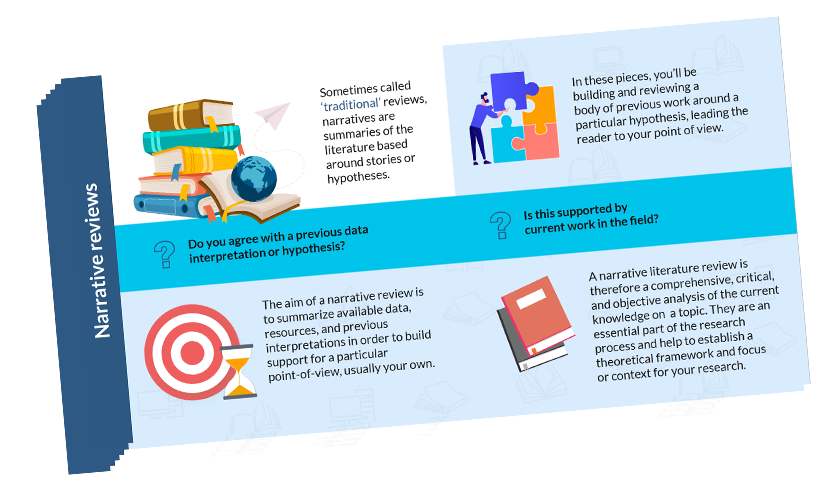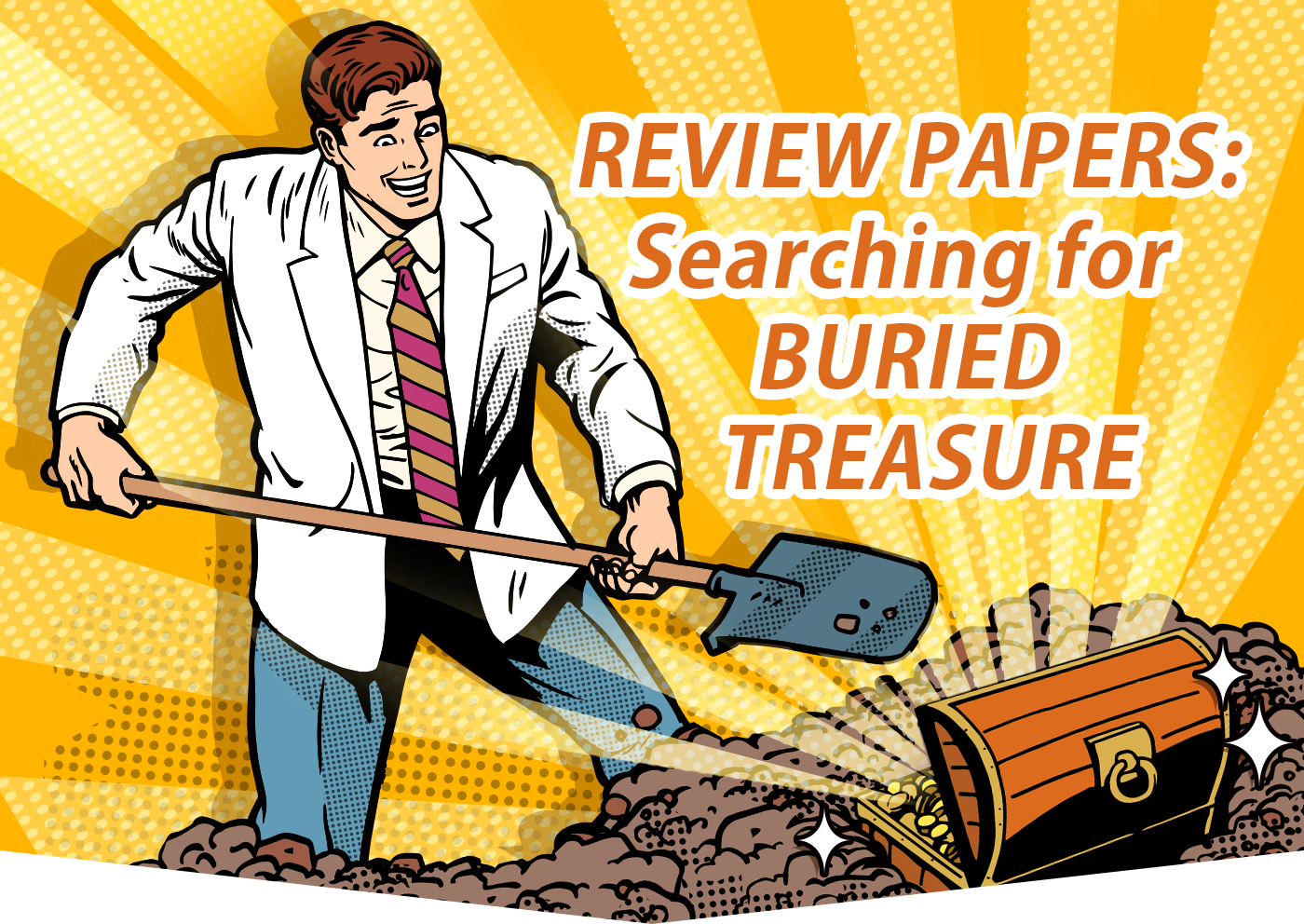FREE PDF:
Guide to Review Paper Types

Log in to download now!

Don’t have a MY edanz account yet?
Start one for free and download this (and more) free content!
REVIEW PAPERS: a Quick Review!
Are you considering creating and publishing a REVIEW PAPER? This article summarizes the different kinds of review papers written by researchers globally and provides some advice, tips, and tricks!
What are review papers anyway?
The first thing to discuss is the question of what a review paper actually is.
Review papers are one of the more common kinds of papers that academics write (in addition to regular peer-reviewed original research articles, of course).
In workshops and advice groups, my colleagues and I are often asked about review papers. People ask us:
• Review papers are all the same, right? That’s where you just review something in your field and get it published in a journal, right?
• Won’t it be easier for me to write a review paper than a regular article?
• Can you give me some advice and templates to help me put together a review article?
There are many kinds of review papers, and they each have different subtleties. Different journals want to publish different kinds of review papers, depending on field, research specialization, readership, and so on.
Remember: the motivations that journals have for inviting and publishing these kinds of articles are quite different from your motivations as an author!
It’s very important to remember that these kinds of articles are usually written by invitation only from journal editorial boards or editors. They are intended to be useful, useable summaries of current research questions or fields. Journals most often invite review papers from established, well-known academics or research groups because they want to increase their citation rates and get people interested in reading their content.
Edanz can help with your review paper!
One of the services that we provide across the research cycle is support with both idea generation for review papers and their composition. Our expert science team can help you to come up with viable ideas for your next review article. We can advise you on the best kind of review article to write, and even help with the writing; putting together existing data from your research team that you might not have thought would end up being publishable and turn it into a new and likely highly cited review!
The features and benefits of review papers
Review papers are usually highly cited because other researchers search them out to use in their own work.
- Reading and citing review papers saves researchers a lot of time and energy. Why review the field when someone else has already done it recently? Why cite 20 papers when you can just cite one or two?
- It’s also the case that clinical research is conducted at a faster pace and needs to be published quicker.
- Doctors and other clinical researchers are almost always extremely busy, juggling a range of different responsibilities at the same time as well as developing and writing up their research.
- The medical, healthcare, and clinical literature is also vast. Large numbers of new papers are published each year ‒ more than 180,000 papers in 2019 alone (that’s more than 2,000 per day).
We therefore need to develop ways in which we can both speed up this process and make the papers that we write more memorable, easier to read, and effective.
How can I get started writing a review article?
People often ask us:
- What are the important issues to consider when writing a review paper?
- What is the structure for these kinds of articles?
Well, obviously, the first thing you need is an interesting and relevant question — something that other researchers in your field will be keen to learn about, or be brought up to speed on.
There are debated issues in all research fields, things that colleagues argue or disagree about: the trick here though is to broaden your perspective and make the questions that you think about in your research widely relevant and interesting for all scientists.
What about a question related to your research that everybody (scientists and non-scientists) will be interested in? This is one of the keys to ensuring your research has wide impact and is noticed perhaps by policymakers.
What is the overall structure of a review article?
Review articles are also quite different to regular research articles in their structure. The best way to think about writing one of these papers is to note down a series of themes within the general scope of the question you are considering.
One way to do this is to think about the different kinds of evidence that have been used to address the issue of your review and then to structure your article around these as themes: for example, ‘chemical evidence’, ‘biological evidence’, and ‘statistical analyses’, or according to the time periods during which key research was carried out, perhaps ‘the 1990s’, ‘between 2000 and 2015’, or something along these lines.
These papers cannot be structured in the same way as regular research articles. There will not be a standard ‘Materials and Methods’ section or ‘Results’ section, but they should begin with an ‘Introduction’ and end with a ‘Discussion’ or ‘Synthesis’ section that summarises what’s known and your own opinion regarding the question being addressed.
Get the free PDF infographic, “Review Article Types”
You’ll be thinking: so what kinds of review papers could I write? We surveyed the literature and came up with nine distinct kinds of review articles. Download the PDF (at the top of this page), have a read, and see which kind best fits the scope of what you’d like to write for your text paper. The PDF summarizes the nine different kinds of review papers commonly written and published by researchers around the world.
What are the sections of a research article?
A good and effective review paper should address a particular burning question in your research field. In this way, it might start with an ‘Introduction’ that sets the question.
The Introduction section tells the reader what the question is in one or two sentences at the start and then summarises the ‘state of current debate’ regarding the issue.
- What do the different factions (people working on this topic) currently think about the possible solutions(s) to this question?
- Why is there a debate on this question?
A reader needs to know from the outset why the question is interesting and why they should continue reading.
The Introduction section of a review paper is different again to this section in a regular research article because you don’t want to cover much previous work here — that will come later in the ‘review’ sections of your article. Just outline the question, why it’s interesting, and why people care about it, perhaps in a series of paragraphs in that order. Introduction sections to review articles tend to be quite short and just set the scene as the content of the article comes later.
As we’ve discussed, you want a series of subheadings for the sections then that will come between the Introduction and the Discussion (or Interpretation) of your review. There are no clear rules as to what these section headings should be, and this will depend on your subject area, but keep them brief and in logical sequence.
Conclusions
Reviewing the literature lets you see what came before, and what did and didn’t work for other researchers.
Publishing a review paper means you can set yourself up as a thought leader in your field. You can demonstrate your understanding and your ability to critically evaluate research.
You’ll also have the chance to provide evidence that may be used to support your own findings and, above all, garner citations and enhance your career.
Good luck with your review paper!

Gareth J. Dyke PhD
Gareth is a prolific scientific author who has published more than 280 articles in peer-reviewed journals over the last 20 years, including in Nature, Science, Proceedings of the National Academy (USA) and other high-profile outlets.
Here is more content you might enjoy:
FREE COURSE
SLR1: Understanding Systematic Reviews
In this course, learn how systematic reviews are conducted and how their results impact real-world practice
PREMIUM COURSE
Reading and Reviewing
In this course you will learn the foundations of reading, reviewing, and critical thinking







